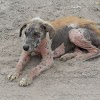Author: Manoj karki (BVSC&AH)
 |
| AFRICAN SWINE FEVER |
African swine fever is the main threat to the
porcine industry in the world. It is also called wart
hog disease. The causative agent of the disease is ASF virus of the
genus Asfivirus in the family Asfaviridae which
a genom size ranging 170-190kbp, which infect mainly porcine macrophage and
cause a devastating disease in domestic pigs, and wild boars.
Distribution:
ASF was first described in Kenya in 1920 as an
acute hemorrhagic fever which caused mortality approaching 100% in domestic pig. It was noticed that disease
outbreak occurred when domestic pig came into close contact with wildlife
species particularly wart hog. The source of the infection was identified as a
virus carried by wart hog which did not show clinical disease.
Afterwards, the disease was prevalent in Portugal,
Spain, Italy, Brazil. The disease does not occur in Australia.
Transmission:
The disease
is transmitted through contact with wild pigs which may remain as reservoir of
infection. The virus is abundantly present in all the secretion and excretion
from naso pharynx, conjunctiva and urogenital tract which may help in the propagation of
virus. It is also transmitted by argasid ticks of
the ornithodoros genus. Also transmitted
through indirect contact with infected pens and ingestion of uncooked
contaminated garbage materials.
Pathogenesis:
The virus
on entry invades the tonsil and lymph nodes of gastro intestinal and respiratory
tract. There is onset of
viraemia. There is damage of vascular endothelium of small vessels. There Is
outcome of changes like haemorrhage, serous exudates, infraction, oedema and
tissue engorgement. There is pronounced lymphopaenia
due to extensive destruction of lymphocytes.
Clinical
sign and lesion:
The acute
or hyper acute form of the disease is characterized by a severe hemorrhage
disease with high mortality. After an incubation period of 5-15 days pig
develop high fever, which persist for about 4 days. 1-2 days after the onset of
fever, there is in appetence, diarrhea, incoordination and prostration. In some
swine there is huddling, shivering, dyspnea, vomiting,
nasal and conjunctiva discharge, reddening or
cyanosis of extremities (snout, ear, tail, and
lower leg) and hemorrhage from nose and anus. With
in a few days they become comatose and die. Pregnant sow
often abort.
In acute
fatal case:
gross lesion are most prominent in the lymphatic and vascular system. Hemorrhage
occur widely and visceral lymph node may resemble blood clots. Spleen is often
enlarged, friable and crumbles on slight pressure. Petechial seen in cortex of
kidney.
In chronic
case: there is
cutaneous like, pneumonia, pericarditis, pleuritis and arthritis.
Diagnosis:
It is
based on the following consideration:
·
Field
diagnosis: based
on clinical sign and lesion
·
Clinical
material: blood,
lymph node, spleen, kidney, and in chronic case, serum for serology are the
best sampled.
·
Virus
isolation and identification:
ASFV may be isolated in primary culture of pig bone marrow or peripheral blood
leucocyte in which hemadsorption can be demonstrated and a cytopathic effect is
seen with in a few days after inoculation.
·
Serological
test: ELISA, PCR
Differential
diagnosis:
The clinical
sign of ASF are similar to several disease such as Erysipeals,
cute salmonellosis and hog cholera.
Treatment:
At present
there is no treatment available to extend satisfactory result against this
disease
Control:
·
An
effort should be made to prohibit the movement of infected animal.
·
Contact
of vectors, animal attendants, veterinarians with the disease pig should be
restricted.
·
Strict quarantine and
slaughter should be adopted to prevent further spread of the disease.
·
Dead
animal should be buried or burnt and the
premises should be properly disinfected.
The preventive
and control of ASF is difficult because:
·
Lack
of an effective vaccine
·
The
transmission of virus infection meat and some cured pork product
·
Clinical
similarly to hog cholera.
·
No
commercial vaccine is available against this disease.







0 Comments